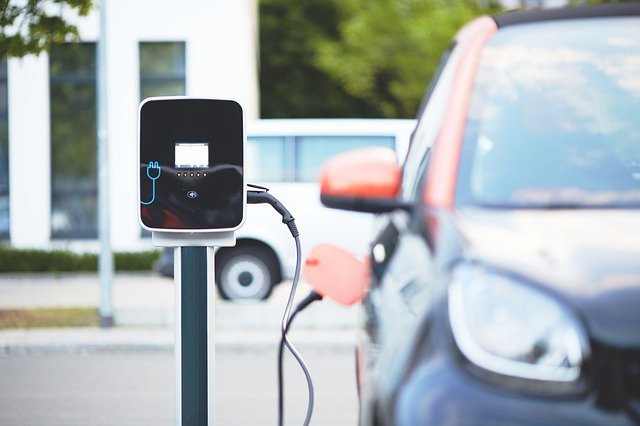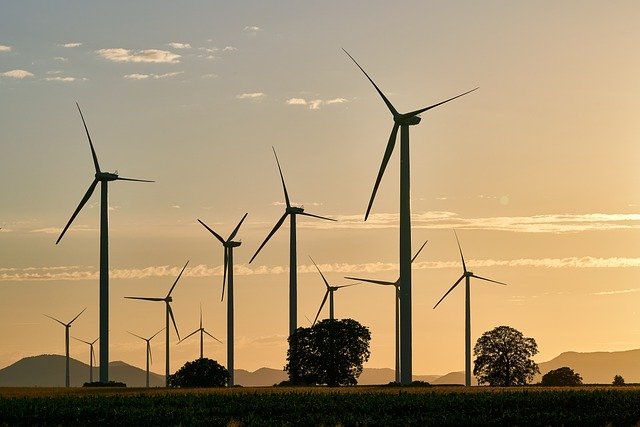|
We now turn our attention to the global ‘Mobility Revolution’, set to be one of the defining investment thematics of the 21st century. An opportunity on par with the introduction of the World Wide Web in the 90s and the rise of mass production in the early 20th century. In doing so a key focus will be on the economics of adoption, the likely winners (both geographically and company wise) as well as, taking a normative stance within the broader context of policy intervention. What is the ‘Mobility Revolution’? Author: Sid Rutalla Author: Sid Rutalla When talking about the global mobility revolution as a whole, we are broadly splitting this into three key pillars:
Most are probably at least somewhat familiar with the end manufacturers in this space, companies like Tesla, while the more adventurous may have seen, if not profited from, the price action of the commodities that underpin this revolution, such as lithium, copper and nickel. But this begs the question, what are the underlying demand structures that are shaping the market? And, perhaps more importantly, what are the economic implications? Let's begin with the economics. Electrification of mobility - moving both people and things - and its adoption is vital to the broader focus and shift towards carbon neutrality and a low emissions future. As it currently stands, this may be a while away given that the gradual adoption of electric vehicles (EVs) will place increasing requirements on the generation of electricity. This may potentially drive up requirements for production in nations such China, India, US and Russia. China, despite their ambitious targets to reach peak CO2 emissions by no later than 2030, has continued to see increasing requirements from older and fossil fuel intensive generation. Coal currently makes up more than 53% of China’s energy generation mix and they look set to continue building new coal-fired power stations. The situation in India is quite similar with diesel and coal still making up the vast majority of their footprint. The reasons for the above can be said to be twofold. First, high population density and, second, cost. At present, the cost for fossil fuel generation remains significantly lower when compared to greener alternatives like solar or wind (this is changing though). A simple concept to illustrate this point is that of energy in vs energy out. That is, how many units of energy is required to produce a given output. Fossil fuels in this instance remain incredibly efficient, delivering 100 units for every 3 units in. Solar farms, and the intensity of commodities required by way of inputs (e.g. copper), remain at a ratio 70 in/100 out. Wind is slightly better at 30 in/100 out. As it currently stands and assuming the current energy mix, it is entirely possible that in the absence of changes to the generation component EVs leave a greater carbon footprint than ICEs (Internal Combustion Engines). So, why does this still make sense within the context of green policy push then? Put simply, if the sources of power generation are green then it is indisputable that the emissions from EVs will be much less than that of internal combustion engines (ICEs). Policy as it currently stands is oriented more toward changing the demand side of the equation with the focus to then shift to the energy mix. It is far easier and makes more sense to change the composition of the fleet and build out the related infrastructure first. Following this, one can then look to focus on changing the source. Indeed, this is the reason why many nations, like Denmark, UK and India, have already moved to place an outright ban, or are at least considering a ban, on the sale of new ICEs within the decade. While there is currently a green push on both fronts (vehicles and energy generation), the transition will broadly occur in two stages. The transition of the end user base is simply likely to happen faster. This will inevitably cause shorter term spikes in emissions while focusing on the upstream infrastructure as we ascertain greater economies of scale. This brings us to the actual transition towards electric vehicles. If one were to base the case solely on a policy perspective, it is likely to occur in a shorter timeframe than the broader transition to renewables as mentioned. So, let’s look at the incentives. What are the other incentives? One of the biggest arguments against electrification is the sheer scale of government intervention in the market. These range from outright subsidies for auto producers to tax incentives. Denmark, for example, has a 180% tax on ICE vehicles while Germany and the US are both providing subsidies to auto makers. But here is the caveat, one could argue that it is based on self-interest. The role of government within the transport sector has been a phenomena throughout history, from the creation of Volks-Wagon in Nazi Germany in order to create a car for the middle class to the generous subsidies in the US as a result of the War Economy during the mid-20th century (not to mention the bailout of the three big automakers in 2008 which, amusingly enough, ended up being a JV between the US Treasury and the Chinese Communist Party given GM’s joint venture with SAIC). Aside from the climate imperative, this is one aspect that sits front and centre. The next generation of industries and, ironically, national security. As it currently stands, China remains responsible for about 80% of the chemical refining involved with converting base metals such as lithium and cobalt into the required battery ingredients while the technology needed, including semiconductor design and software, are primarily in the hands of a combination of Japanese and German companies. One thing is for sure, we will continue to see massive government incentives to sensitive industries and the development of technology as we move forward. Having government backing does tend to help de-risk an investment somewhat; how many in Australia, for example, invest in the Big 4 banks because of the notion of “too big to fail”? We will dig deeper into the cost and efficiency arguments for and against EVs later but, for now, we are already seeing the cost of EV production fall significantly to be competitive with ICEs. Aside from this, looking at the macroeconomic side, there are certain nuances in the development of this particular revolution that differ from what we saw during the last industrial revolution.
So, to conclude our brief introduction to the investment thematic, below are some key take-aways:
This has been an introduction to the Global Mobility Revolution, keep an eye out for the white paper exploring each of our three pillars in greater detail.
2 Comments
Des
23/9/2021 05:05:06 pm
Excellent article Sid!
Reply
Jeff Jamieson
24/9/2021 07:59:51 am
The Stagnant Wage Growth & Income Inequality problem as it relates to holding back the acceleration of electric vehicle adoption looks like being solved quickly, especially in China where
Reply
Your comment will be posted after it is approved.
Leave a Reply. |
Markets & CommentaryAt TAMIM we are committed to educating investors on how best to manage their retirement futures. Sign up to receive our weekly newsletter:
TAMIM Asset Management provides general information to help you understand our investment approach. Any financial information we provide is not advice, has not considered your personal circumstances and may not be suitable for you.
Archives
April 2024
Categories
All
|
TAMIM | Equities | Property | Credit
DISCLAIMER
The information provided on this website should not be considered financial or investment advice and is general information intended only for wholesale clients ( as defined in the Corporations Act). If you are not a wholesale client, you should exit the website. The content has been prepared without taking into account your personal objectives, financial situations or needs. You should seek personal financial advice before making any financial or investment decisions. Where the website refers to a particular financial product, you should obtain a copy of the relevant product services guide or offer document for wholesale investors before making any decision in relation to the product. Investment returns are not guaranteed as all investments carry some risk. The value of an investment may rise or fall with the changes in the market. Past performance is no guarantee of future performance. This statement relates to any claims made regarding past performance of any Tamim (or associated companies) products. Tamim does not guarantee the accuracy of any information in this website, including information provided by third parties. Information can change without notice and Tamim will endeavour to update this website as soon as practicable after changes. Tamim Funds Management Pty Limited and CTSP Funds Management Pty Ltd trading as Tamim Asset Management and its related entities do not accept responsibility for any inaccuracy or any actions taken in reliance upon this advice. All information provided on this website is correct at the time of writing and is subject to change due to changes in legislation. Please contact Tamim if you wish to confirm the currency of any information on the website.
magellen, kosec, clime, wilson, wam, montgomery, platinum, commsec, caledonia, pengana, tamim



 RSS Feed
RSS Feed